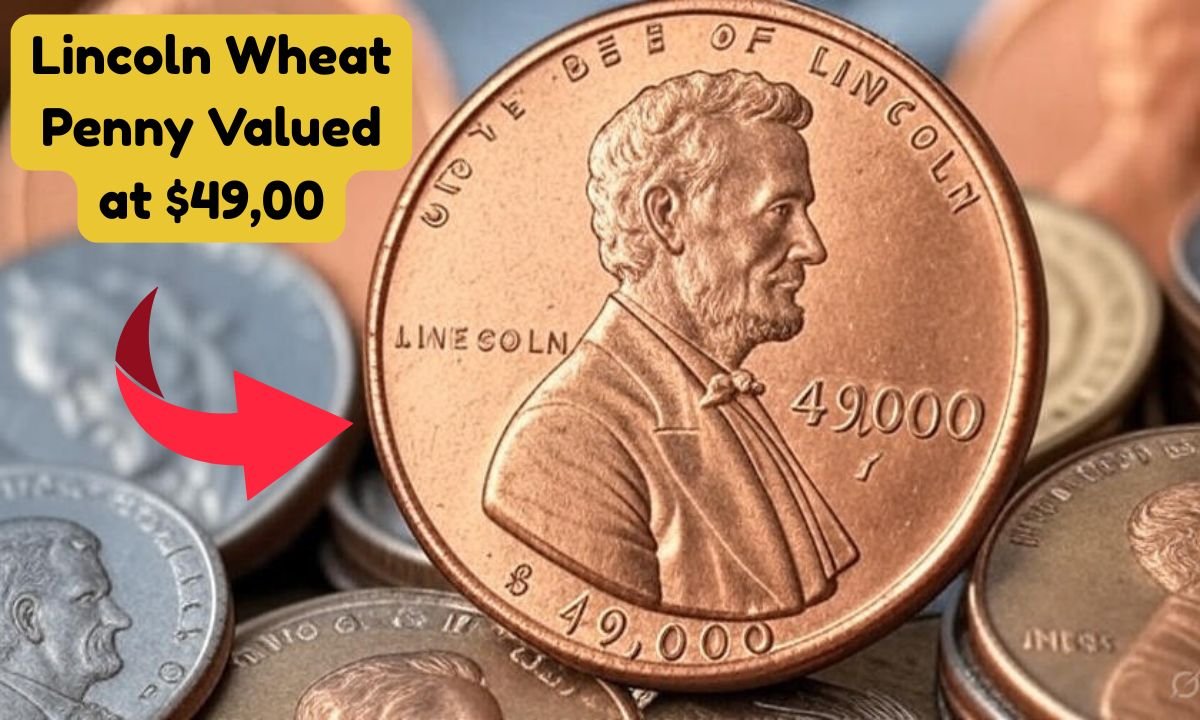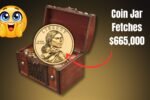Imagine finding a penny in your pocket that’s worth more than a fancy car. Sounds like a fairy tale, right? But it’s not! The Lincoln Wheat Penny, a simple coin you might overlook, could be worth up to $49,000. Even crazier? Some of these treasures might still be hiding in your change jar or piggy bank. Let’s dive into the story of this iconic coin, why it’s so valuable, and how you might spot one in your everyday life.
What’s a Lincoln Wheat Penny Anyway?
Picture a penny with Abraham Lincoln’s face on one side and two stalks of wheat on the back. That’s the Lincoln Wheat Penny, first minted in 1909 to celebrate Lincoln’s 100th birthday. Designed by Victor David Brenner, it was the first U.S. coin to feature a real person instead of a symbol like Lady Liberty. These pennies were made until 1958, when they got a new look with the Lincoln Memorial. Most of these coins are worth just a cent, but a few rare ones? They’re like finding a golden ticket in a candy bar!
Why Are Some Pennies Worth So Much?
So, what makes a penny worth $49,000? It’s all about rarity and mistakes. During World War II, copper was needed for the war, so in 1943, the U.S. Mint switched to making pennies from zinc-coated steel. But—oops!—a tiny number of pennies were accidentally struck in bronze, a mix-up from the previous year’s materials. These 1943 bronze pennies are super rare, with only a handful known to exist. One of them, especially from the San Francisco Mint (marked with an “S”), can fetch $49,000 or more at auction. It’s like finding a needle in a haystack, but with a huge payday!
Other rare pennies, like the 1909-S VDB (with the designer’s initials) or the 1914-D, are also valuable because so few were made. The condition matters too—if the coin looks shiny and new, it’s worth more. Think of it like a vintage toy in its original box: the better it looks, the bigger the price tag.
Could These Pennies Still Be Out There?
Here’s the exciting part: yes, these valuable pennies might still be in circulation! Billions of Lincoln Wheat Pennies were minted, and many are still floating around in coin jars, old wallets, or even your pocket change. Since they look similar to regular pennies, someone might have spent a rare one without knowing. Imagine buying a coffee and accidentally using a coin worth thousands! Stories pop up of people finding these gems in family collections or at flea markets. In 2019, someone found a 1943 copper penny in their coin stash and sold it for over $200,000. So, the dream of finding a fortune in your change isn’t just a fantasy—it’s possible!
How to Spot a Valuable Penny
Want to join the treasure hunt? You don’t need a metal detector, just a sharp eye. Here’s how to check if your penny is a winner:
- Look at the Year and Mint Mark: Check the date and the tiny letter under it. An “S” means San Francisco, “D” means Denver, and no letter means Philadelphia. Key years to watch for are 1943 (bronze), 1909-S VDB, or 1914-D.
- Do the Magnet Test: For 1943 pennies, grab a magnet. Steel pennies stick; bronze ones don’t. If your 1943 penny doesn’t stick, you might be holding something special.
- Check the Weight: A bronze penny weighs about 3.11 grams, while a steel one is around 2.7 grams. A small kitchen scale can help.
- Inspect the Color: Bronze pennies are reddish-brown, not silvery like steel ones.
- Look for Errors: Some pennies have double-stamped letters or missing mint marks, making them extra valuable.
If you think you’ve got a rare one, don’t clean it! Cleaning can ruin its value. Take it to a pro at a place like PCGS or NGC for a real appraisal. It’s like taking your car to a mechanic instead of trying to fix it yourself.
Why Coin Collecting Is So Exciting
Coin collecting, or numismatics, is like a treasure hunt that never ends. Every penny you pick up could be a piece of history—or a ticket to a big payout. The Lincoln Wheat Penny’s story pulls people in because it mixes history, luck, and the thrill of discovery. With social media buzzing about rare coins, more folks are digging through their change, hoping to strike it rich. It’s not just about money; it’s about holding a piece of the past. Who wouldn’t want to find a tiny time capsule worth thousands?
Tips to Start Your Coin Hunt
Ready to check your change? Start by looking through old coin jars, piggy banks, or your grandma’s attic. Coin shops, flea markets, or even bank rolls of pennies are great places to hunt. Learn the key dates and marks, and keep a magnifying glass handy to spot details. Join online groups or forums to learn from other collectors. It’s like joining a club where everyone’s obsessed with finding hidden treasure!
Conclusion
The Lincoln Wheat Penny proves that sometimes the smallest things can hold the biggest surprises. A coin worth $49,000 could be sitting in your pocket right now, waiting to be discovered. By knowing what to look for—like the 1943 bronze penny or other rare variants—you could turn a penny into a life-changing find. So, next time you get change from the store, take a closer look. You might just find a piece of history that’s worth way more than a cent. Happy hunting!
FAQs
What makes a Lincoln Wheat Penny valuable?
Rarity, minting errors, and condition make some pennies worth thousands. For example, the 1943 bronze penny is super rare because most were made of steel.
How do I know if my 1943 penny is bronze?
Use a magnet. If it doesn’t stick and looks reddish-brown, it might be bronze. Weigh it too—bronze pennies are about 3.11 grams.
Where can I find Lincoln Wheat Pennies?
Check your pocket change, old coin jars, flea markets, or buy rolls of pennies from banks. They’re still out there!
Should I clean my penny if I think it’s valuable?
No way! Cleaning can lower its value. Take it to a professional grader like PCGS or NGC.
Are all Lincoln Wheat Pennies worth a lot?
Nope, most are worth just a cent or a few dollars. Only rare ones, like the 1943 bronze or 1909-S VDB, are worth big bucks.




